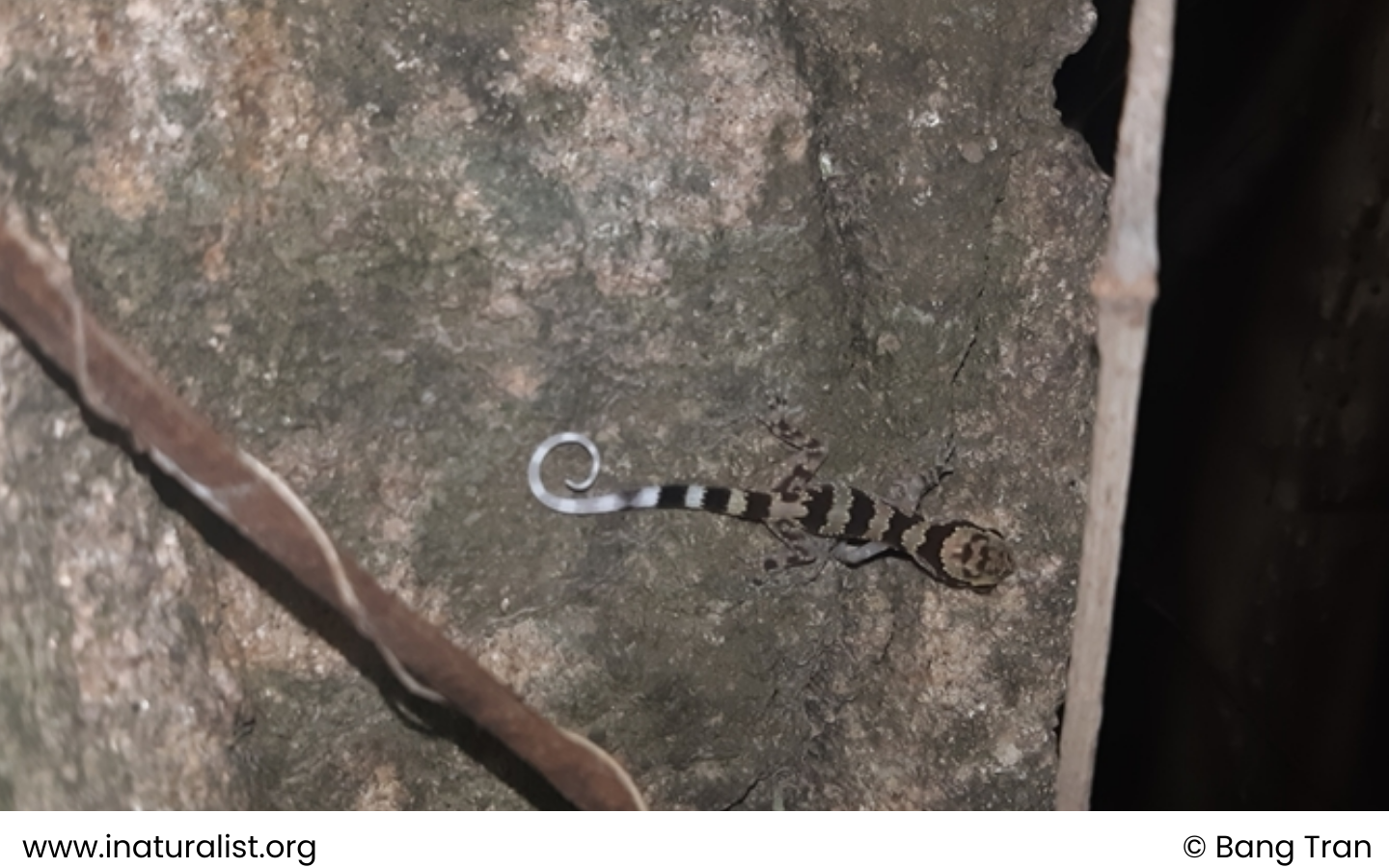
Science name: Cyrtodactylus caovansungi – Orlov, Quang Truong, Nazarov, Ananjeva & Ngoc Sang, 2007
Taxonomic: Animalia>> Chordata>> Reptilia>> Squamata >> Gekkonidae >> caovansungi
Species status: Endemic ; IUCN status: EN (Endangered Species)
Description:
Physical characteristics:
This is a large gecko species with a snout-vent length (SVL) of 94 mm in males and a tail length of 120 mm. The head is not sharply defined from the neck, with a slender and pointed snout that is longer than the eye diameter.
The dorsal scales are small, rounded, and granular, with conical tubercles distributed evenly from the head to the base of the tail. There are 16–18 irregular longitudinal rows of keeled dorsal tubercles.
Males possess nine preanal pores arranged in a V-shaped pattern, with eight enlarged femoral scales on each side. However, femoral pores are present only on three of these scales.
The tail is weakly segmented, with segments formed by roundish keeled tubercles. The lower surface of the tail is covered with enlarged scales arranged in a single row.
The dorsal coloration consists of four dark brown bands edged by light borders across the back. The head is marked with irregular light and dark patches, while the ventral surface is pale with no markings. The tail has 4–5 wide light and dark bands.
Distribution and habitat:
Distribution and Habitat:
Elevation: Found at an elevation of approximately 400 meters.
Area: This species is endemic to Vietnam, specifically known from its type locality in Vinh Hai, Ninh Hai district, Ninh Thuan Province, within Nui Chua National Park.
Habitat: Cyrtodactylus caovansungi inhabits evergreen forests and coastal dry forests. It is typically found in trees above water near rocky streams. The species is nocturnal and primarily active at night.
Behaviour and ecology:
Lifestyle: Cyrtodactylus caovansungi is nocturnal, feeding on insects found within its forest habitat. It primarily appears at night and lives in forested areas.
Reproduction: This species is oviparous, laying two eggs at the beginning of the rainy season.
Conservation and status:
IUCN Red List Category and Criteria: Endangered (B1ab(iii)+2ab(iii))
Justification: The species is listed as Endangered due to its limited range (only one known location) and ongoing habitat degradation from deforestation and other activities. The population is believed to be decreasing due to habitat loss.
Remarks:
The species was named in honor of Professor Cao Van Sung, a well-known Vietnamese biologist who contributed significantly to zoological research in Vietnam.
Crocodile Trail – The Best Birding Trail in Cat Tien National Park
If you’re a birder or nature photographer planning a trip to Vietnam, few places offer [...]
Cong Troi Trail – Top 1 Dalat Plateau Birding Trail Experience
If you’re a birder or nature photographer planning a trip to Vietnam’s Central Highlands, the [...]
How to Identify the Greater Sand Plover, Tibetan Sand Plover and Siberian Sand Plover
Identification Differences within the Sand Plover Complex: The sand plover group, which was traditionally divided [...]
Highlights of Cat Tien National Park Reptiles and Amphibian Endemics
Spanning over 71,350 hectares of tropical forests, grasslands, and wetlands, Cat Tien National Park is [...]
Highlights of Cat Tien National Park Mammals in a World Biosphere Reserve
In addition to reptiles and birds, Cat Tien National Park is also rich in mammals, [...]
Kontum Plateau Endemic and Highlight bird
Kontum Plateau Endemic And Highlight Bird species like Chestnut-eared Laughingthrush and top birding routes while [...]